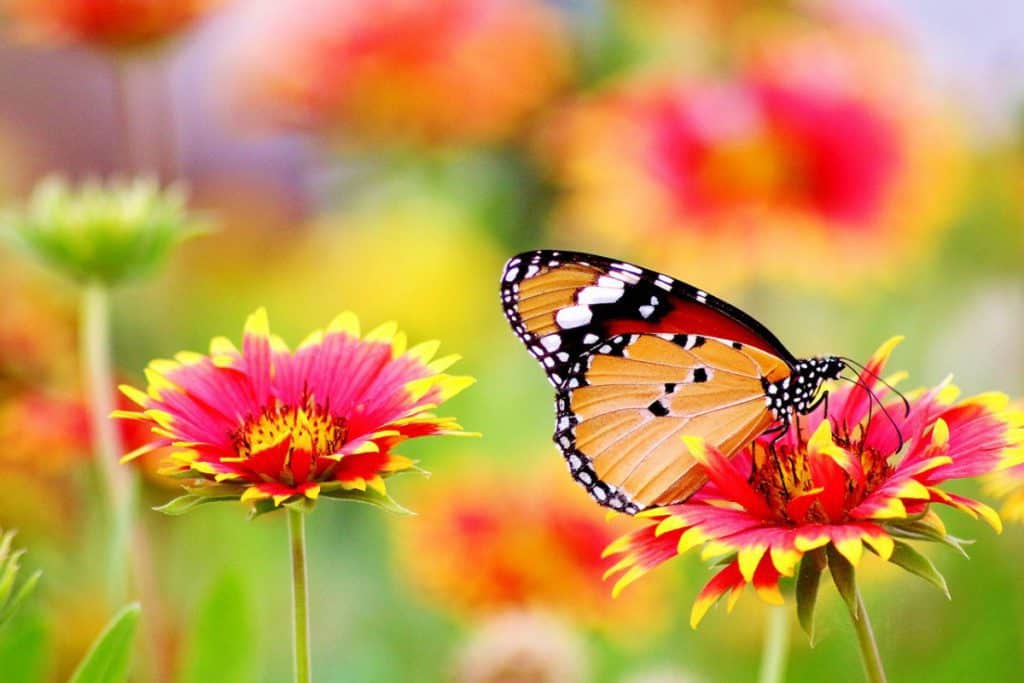
Who among us has not been enchanted with the shimmering wings of a butterfly as it flits from flower to flower in search of nectar?
These vibrant colors are not just aesthetic, they serve specific purposes. Certain colors are handy camouflage that help adult butterflies blend into their surroundings and stay safe.
But they could also be used to attract mates, or to warn off would-be predators that they are likely distasteful and/or toxic. These majestic looking insects have evolved to use every possible means to survive and continue the cycle of life.
So where do the colors come from?
There are two types of colors found on butterflies:
- (a) natural pigmentation
- (b) structural colors.
For example, orange, brown, black or yellow colors come from actual pigments in a butterfly’s skin. The brown and yellow shades come from melanin, the same pigment we humans have.
On the other hand, butterflies can show bright blue, green, red, purple or grey/white wings due to structural colors that are created by photonic cells – namely, the chitin in their wings – that reflect certain bands of light in specific ways.
Natural pigmentation stays the same whenever or wherever you see it. But with structural colors, the angle at which light hits the wings as they flutter will cause the color to change – a shimmering effect we call iridescence.
Lepidoptera is an order of insects that include butterflies and moths. There are possibly over 20,000 species of butterflies in the world, out of which some 750 are found in the US.
As we go on to discuss the gamut of colors found in butterflies, it’s important to remember that many of the most striking specimens exhibit more than one color. Moreover, iridescent butterflies change color as they flit about, creating beautiful contrasts.
The butterflies described below include both iridescent and natural pigmentation driven colors.
IRIDESCENT BUTTERFLIES – Blue, Green, Purple, Red, Grey (and Pink)
1. Can Butterflies Be Blue?
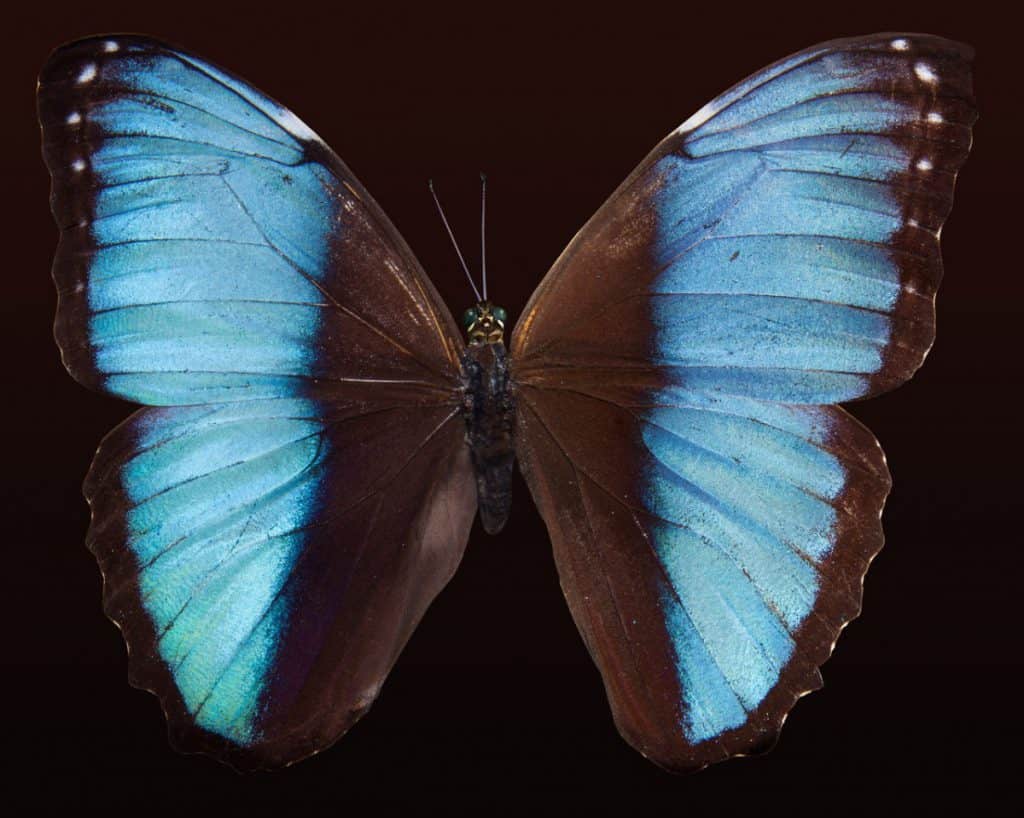
Blue butterflies belong to the Lycaenidae family, along with Hairstreaks and Coppers. Striking in appearance, they can be found on every continent. The color blue is often thought to symbolize a person’s essence or soul. People think these butterflies will bring joy or good luck.
a) Are Blue Butterflies Rare?
Many blue butterflies are commonly found – there are thousands of species globally. One of the most famous is the Blue Morpho, whose size (5 to 8 inches) and numbers make them visible from the air in Central and South American Rain Forests. Interestingly, the undersides of their wings are brown, and those colors flash as they fly. Blue Morpho butterflies communicate and attract mates using their color.
Another common butterfly is the Ulysses Butterfly, also called the Mountain Blue, which is a large swallowtail butterfly found in Australia. The gorgeous Sappho Longwings, with light blue and white wings, can only be found in the rainforests of Costa Rica and Belize. Common North American species include the shimmery blue Acmon Blues and the dark Spring Azures.
Though they are common, two species of blue butterflies are among the rarest. One of them, the large blue butterfly, had gone extinct in the UK over 40 years back, but have been successfully reintroduced this year.
Another, the Palos Verdes Blue, is considered to be the rarest butterfly in the world. Declared extinct decades back, a population was found to exist around San Pedro, CA – there are only a few hundred of them in the wild.
b) How Do You Identify Blue Butterflies?
Blue butterflies are easy to identify due to their bright iridescence. To identify each species, other markings need to be studied. For example, the famous Blue Morpho butterflies can be spotted based on the brown undersides of their wings. The large blue butterflies in the U.K. have speckled black dots on the blue background of their wings.
c) Where Can They Be Found?
As mentioned before, blue butterflies can be found the world over. They are often featured in nature preserves and butterfly sanctuaries. Many tourist attractions, such as the Amazon Rain Forest, promote visits when blue butterflies are present in number.
2. Can Butterflies Be Purple?
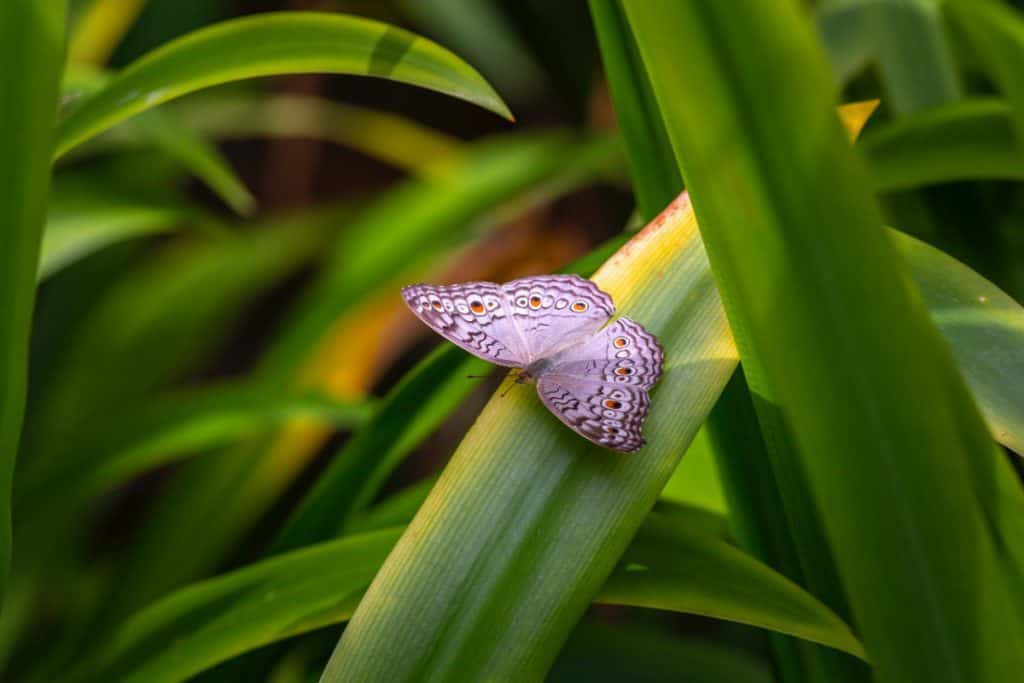
Purple butterflies are usually associated with royalty and wealth. Many people think that seeing a purple butterfly may herald the arrival of someone important in your life. There are quite a few specimens of butterflies that display purple iridescence.
a) Are Purple Butterflies Rare?
Purple butterflies are not exactly rare. However, you do not always find a consistently purple color, its more common to find various shades of blue, black and purple co-mingled on a butterfly’s wings.
One of the best-known purple butterflies is the Purple Emperor, found in the British Isles and parts of Europe. However, only the male of the species fits the description with iridescent wings that shine blue and purple in the sunlight. Its close relative is the Indian Purple Emperor, found in India and other parts of South Asia. The Queen Purple Tip, also called the Regal Purple Tip or the Large Violet Tip butterfly is found in the Nataal Province in South Africa.
A common purple species found in North America is the Red-spotted Purple or White Admiral. Some varieties of Mangrove Skippers can also show purple shades on their wings.
b) How Do You Identify Purple Butterflies?
Purple butterflies may be difficult to differentiate from the many shades of blue and black butterflies. However, there are some distinctive species, like the male Purple Emperor with white markings and a black edge.
c) Where Can They Be Found?
Purple butterflies can be found in North America, UK, Europe, South Africa and India predominantly.
3. Can Butterflies Be Green?
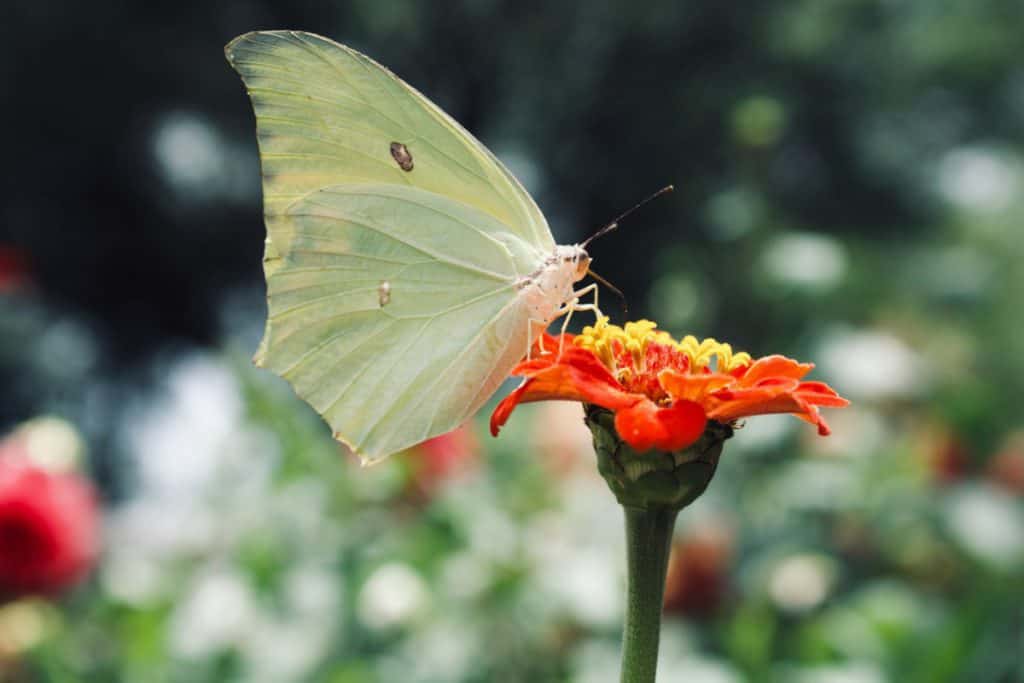
Green is one of the iridescent colors that flashes on the simmering wings of a butterfly. The Chinese believe green butterflies to be a symbol of good. To others, they represent love or prosperity.
a) Are Green Butterflies Rare?
Green butterflies are common. The Emerald Swallowtail, Emerald-patched Cattleheart, the Coastal Green Hairstreak, the dark green Pipeline Swallowtails and Brimstone butterfly are all examples of brilliant green colored butterflies.
There are also a number of green butterflies with peacock colors – such as the Banded Peacock found all over South Asia. Its name comes from an iridescent pattern of green and bluish green with black shimmer.
The Australian Richmond Birdwing, with its rich swathes of black, yellow and green, is one of the species that has become endangered in recent year due to habitat destruction, drought and an invasive vine that destroys its larvae.
b) How Do You Identify Green Butterflies?
Typically, green butterflies have very distinctive markings, which make it easy to identify them. Examples are the Richmond Birdwing or the Banded Peacock, but even commonly found species such as the Coastal Green Hairstreak are easy to identify. One issue may be that the sheer green colored insects blend in with the foliage, making them harder to spot.
c) Where Can They Be Found?
Green butterflies are common all over the world, with many beautiful species being found in North America, Central and South America and South and Southeast Asia.
4. Can Butterflies Be Red?
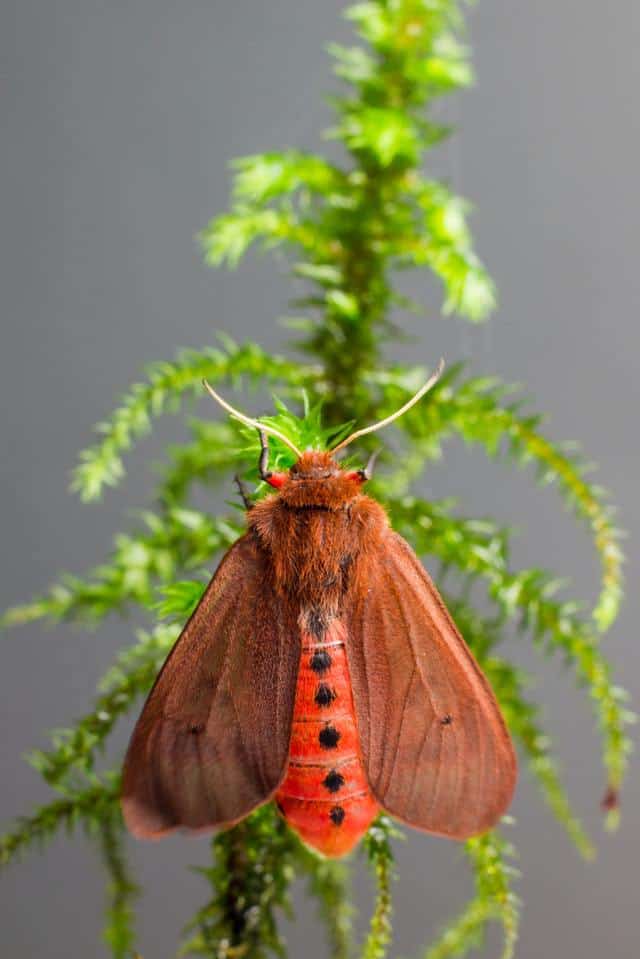
Red is an iridescent color that often exists with black or other bases in butterflies. Wings of red butterflies can have different colors on the underside, giving a shimmering effect of changing colors as the insect flits. Red butterflies are undoubtedly striking. Many Native American tribes believe that they represent powerful spirits.
a) Are Red Butterflies Rare?
Red butterflies are found all over the world. Some stunning examples include the Red Lacewing from South East Asia, the Scarlet Peacock from South America, the Red Admiral in North America and elsewhere, the Peacock Butterfly in the UK and Europe and the Postman Butterfly in Mexico and Central America. Another common species in the UK is the Cinnabar, which has bright red bands with some grey patches on its wings.
b) How Do You Identify Red Butterflies?
Most species of red butterflies are easy to spot due to their striking color, though there are exceptions. For example, the Scarlet Peacock has bright red stripes on a deep scarlet background, making them harder to spot.
c) Where Can They Be Found?
Red butterflies can be found all over the world, except Antarctica. Having said that, they may not be the most common color within each geography.
5. Can Butterflies Be Grey?
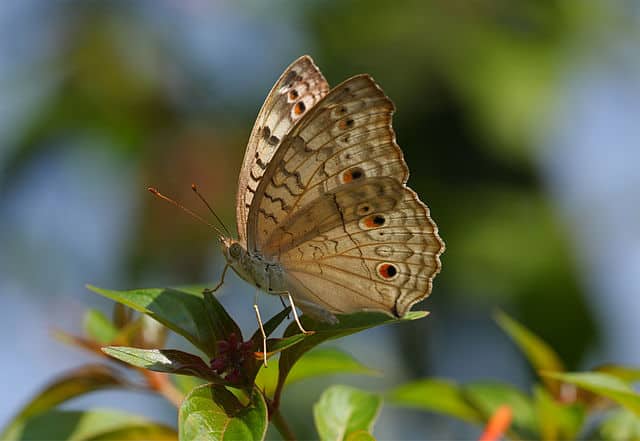
There are thousands of species of grey, white or zebra colored butterflies. Often times, grey is combined with some other bright, iridescent color.
a) Are Grey Butterflies Rare?
Grey butterflies abound all around the world. Some common species include the Angola White Lady, Checkered White, Variable Cracker, Glaucous Cracker, Grey Pansy, Great Southern White, White Morpho, Pearly Leafwing, Clouded Mother of Pearl, Forest Mother of Pearl, Tree Nymph, Wood Nymph and Mocker Swallowtail. There are some distinctive grey species with a splash of other color, such as the Great Orange Tip and the Red Spot Diadem.
b) How Do You Identify Grey Butterflies?
Grey butterflies are often hard to spot due to their dirty white sheen. Species such as the Great Orange Tip or the Red Spot Diadem are easier to spot due to their brighter spots of orange or red.
c) Where Can They Be Found?
Grey butterflies can be found on every continent except Antarctica.
6. Can Butterflies Be Pink?
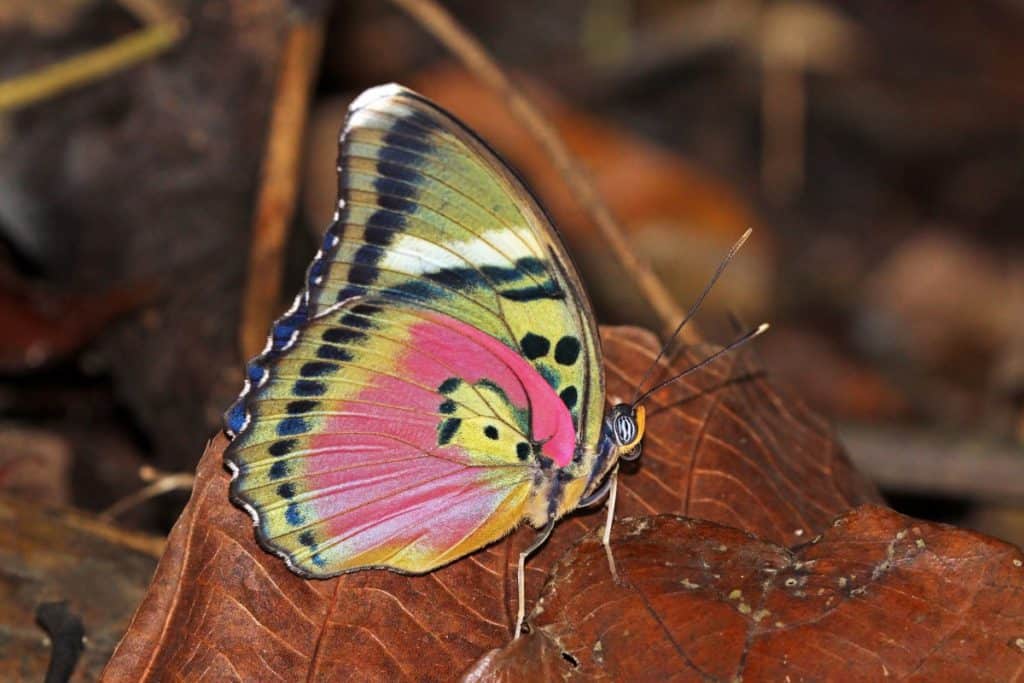
Many experts say that there are no butterflies that are really pink in color, though some species may appear pink due to iridescence. Pink is not a color that exists in nature, it is not a wavelength or particle, and does not appear in the visible spectrum.
Often times, our brain perceives something to be pink, without the color actually being present. Pink is the color of femininity, people take the sighting of one to signify that one needs to relax and embrace a process of transformation in life.
a) Are Pink Butterflies Rare?
Butterflies that appear pink are rare in nature. Often times, they are closer to purple, or possess translucent or colorless wings, but their shimmer could produce a pink effect in the sunlight. The pink and olive-colored Elephant Hawk Moth is often mistaken for a pink butterfly, but they are not.
The White Letter Hairstreak or the Sloe Hairstreak butterflies – which are pale brown – can sometimes appear pink in the right environment and light.
b) How Do You Identify Pink Butterflies?
If you are viewing an Elephant Hawk Moth, you can make out from its body shape and nocturnal habits that it’s not a real butterfly. In other cases, if butterflies appear pink, look carefully. It’s very likely that you are spotting a yellow, white, light brown or transparent butterfly on a pink flower.
c) Where Can They Be Found?
As discussed above, pink butterflies do not really exist. The Elephant Hawk Moth is native to the UK. The Hairstreaks mentioned above are found in Europe. As a practical matter, pink shaded butterflies are more often found in boutique shops, arts and crafts, rather than in nature.
PIGMENTED BUTTERFLIES – Orange, Black, Yellow and Brown
7. Can Butterflies Be Orange?
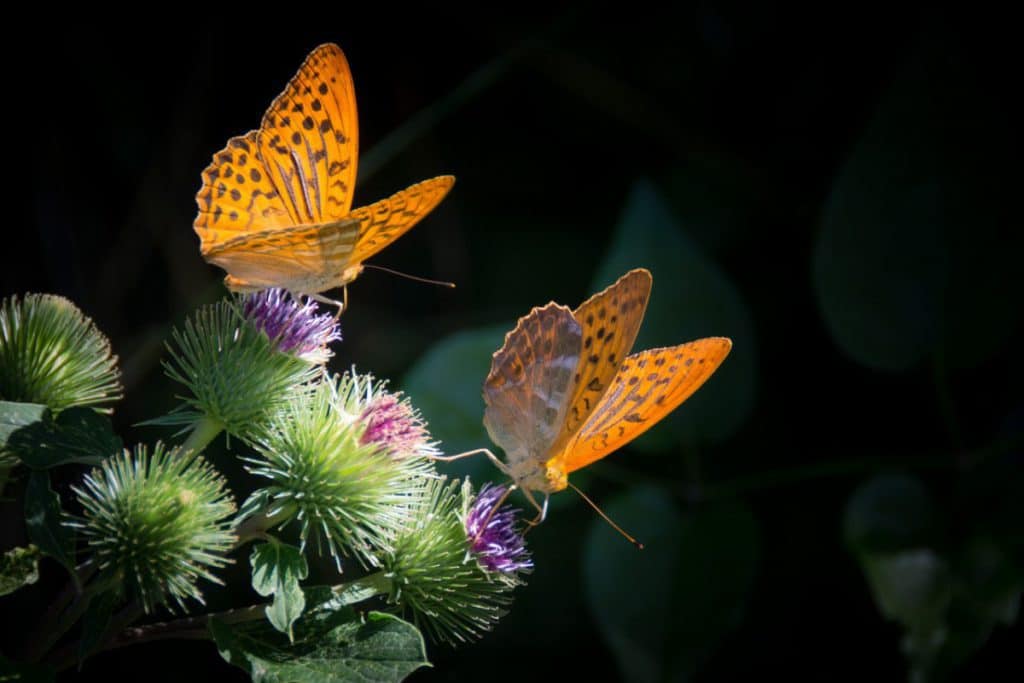
Orange is a natural color, which occurs due to pigmentation and is found both on open and closed wings of butterflies. There are thousands of species. They typically occur in the family Nymphalidae, including longwings and other species. Orange coloration is often paired with black, either in patches, dots or bands. Orange butterflies are often associated with passion.
a) Are Orange Butterflies Rare?
Orange butterflies are quite common. The most famous one visible in North America are the majestic Wanderer or Monarch butterfly, which frequents urban areas and is known for its large migratory zone. Wanderer Butterflies are also found extensively in Australia.
Other North American orange butterflies include the Gulf Fritillary, the Painted Lady, the Sleepy Orange and the Viceroy. A famous South American variety is the Banded Orange Tiger, which sports dark brown bands on an orange background, and Is an excellent pollinator.
b) How Do You Identify Orange Butterflies?
Orange is a natural pigmentation, so butterflies of that color are easy to spot. The large and brilliantly colored Monarch butterflies are among the most recognizable butterflies, with a 3 to 4-inch wingspan and deep orange wings with black borders and veins.
Male monarchs have two black spots in the middle of their hind wing. The Viceroy, which is very similar, can be distinguished from the Monarch through a black line in the hindwing and a crossband with white spots on the forewing. The Painted Lady butterflies are distinct from the Monarchs, in that they have blue centered eyespots in the lower hind wing, and their wings become brown close to the body.
Finally, the Red Admiral is distinct from each of the above, in that its color has more black patches than orange, and it has red bands on both sets of wings. The tiny Question Mark butterflies are another example of a gorgeous orange shade with black patches and silver marks.
c) Where Can They Be Found?
Monarch butterflies are found in North America and Australia. Banded Orange Tigers are found over a band from Central Mexico to Brazil. Orange tipped butterflies are common in Europe and Asia. They are literally found on every continent except Antarctica.
8. Can Butterflies Be Black?
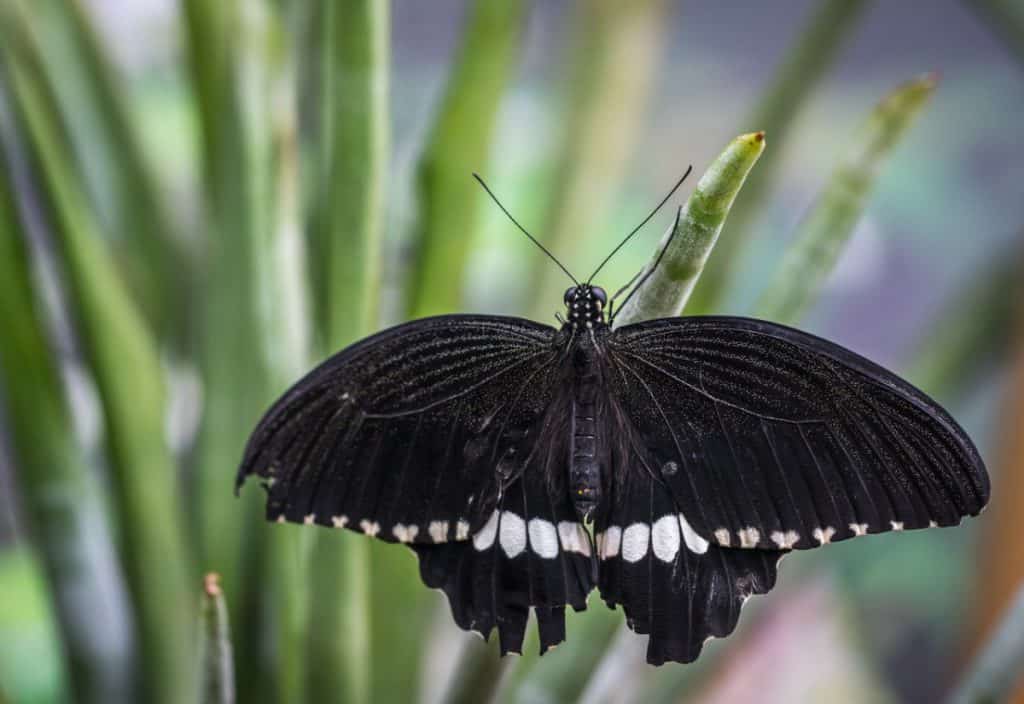
Black pigmentation in butterflies create black patches or bands on other backgrounds (e.g. Monarchs), zebra colors or predominantly black backgrounds with other, iridescent colors.
Bottom line – most black pigmentation occurs in conjunction with other wing colors. Orange-black and yellow-black are two common color combinations. Black butterflies are often taken to symbolize hope, transportation and new beginnings.
a) Are Black Butterflies Rare?
Black butterflies are common. Some beautiful ones include the Spicebush Swallowtail with black wings, blue patches and white spots along the borders and the Jamaican Swallowtail, primarily black in color with yellow and blue bands and spots.
A common North American species is the Black Swallowtail, which is a summer staple in the Chicago area. The Luzon Peacock Swallowtail has a predominantly blue-black wing, with peacock markings at the lower edges. However, as with other colors, there are some extremely rare black butterflies.
One example is the Queen Alexandra’s Birdwing, which has a large black body broken by a yellow saddle and long red spike. This beautiful specimen, the world’s largest butterfly with a wingspan up to 12 inches, is only found in the forests of Papua New Guinea.
The Bhutan Glory is a swallowtail butterfly with greyish black and white bands. Found in Bhutan, Northeast India and Southeast Asia, this insect has become rare in recent years. The Ceylon Rose, with its spectacular white patterns on a black background, is also critically endangered.
b) How Do You Identify Black Butterflies?
Black butterflies are easy to spot, though greyish or brownish black colors may fade into the background depending on their habitat. The rare species mentioned above each have distinctive and spectacular colors and markings, making them visible to the naked eye.
c) Where Can They Be Found?
Black butterflies are abundant the world over, except in Antarctica, though certain rare species (like the ones mentioned above) have limited habitats.
9. Can Butterflies Be Brown?
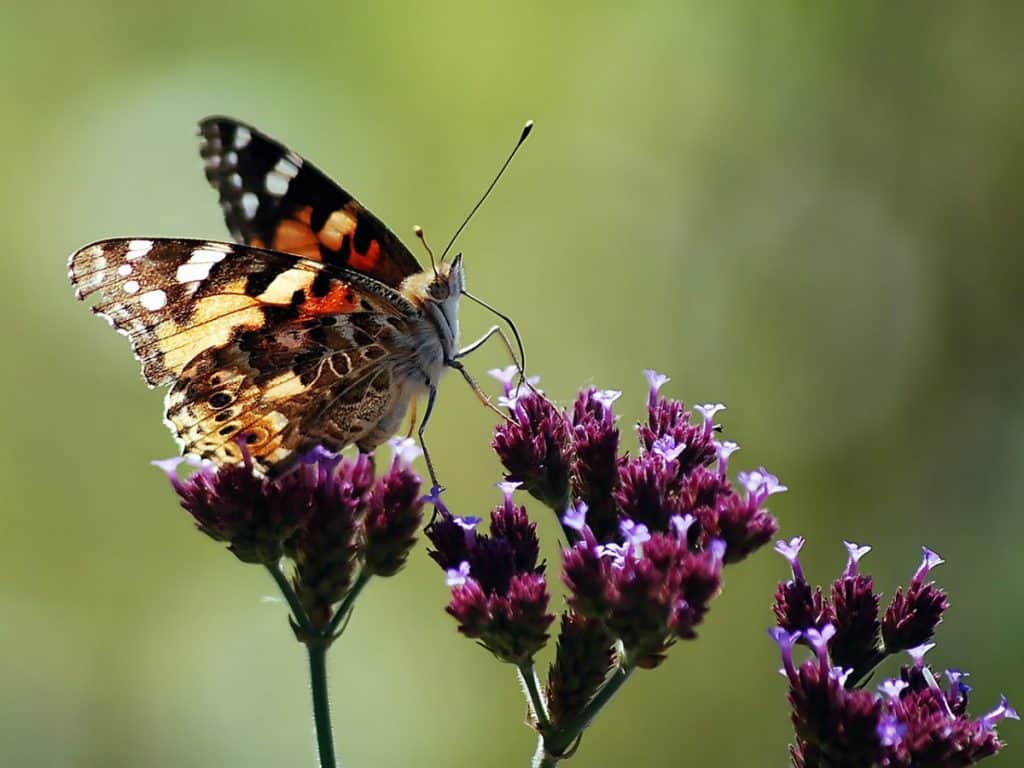
In many cultures, a brown or tan colored butterfly symbolizes a fresh start. Some view them as messengers of important news. Brown pigmentation is very common in butterflies, whether in some parts of the wing or as the predominant color.
a) Are Brown Butterflies Rare?
Brown butterflies are common. The Common Buckeye, which has brown wings with black, orange and blue spots, is found in several provinces in Canada and all parts of the US except the North West. Other common species found in North America are the Dull Firetip, the Mangrove Skipper, the Belus Skipper, the Mercurial Skipper and the Silver-Spotted Skipper.
However, there are species that have become very rare due to habitat loss, such as the Mitchell’s Satyr, a butterfly with wingspan up to 1 and � inches, which has orange-ringed, black circular eye spots on its chocolate colored wings. Another species, the Saturn butterflies, are found only in the forests Singapore’s nature preserves.
b) How Do You Identify Brown Butterflies?
Brown butterflies may be difficult to spot, since their color provides handy camouflage. There are a number of butterflies with brown or drab undersides to their wings, such as the Saturn or Mitchell’s Satyr butterflies mentioned above.
Butterflies with iridescent colors may also have naturally occurring brown undersides or patches on their wings – a prime example being the Blue Morpho butterflies.
c) Where Can They Be Found?
Brown butterflies can be found in every continent except Antarctica.
10.Can Butterflies Be Yellow?
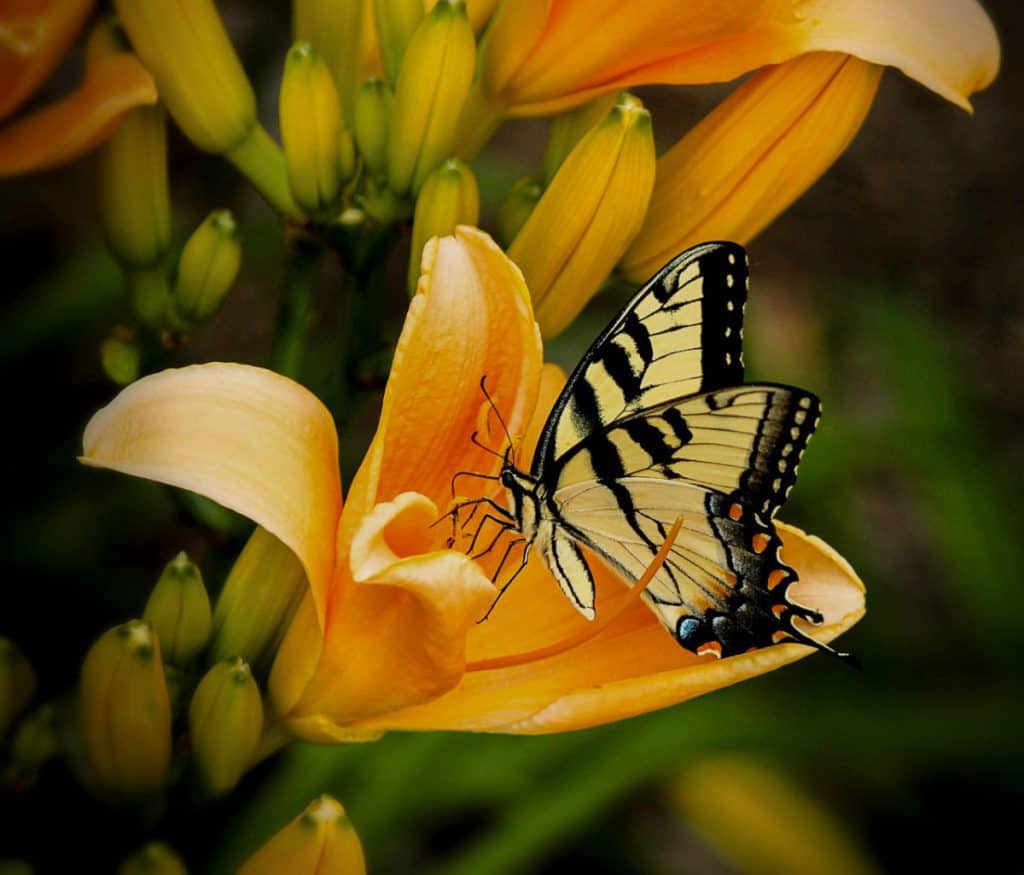
Yellow colors in butterflies often occur in conjunction with natural pigmentation such as black, or beautiful green or blue iridescence. Also, there are a number of gold winged butterflies. You don’t always see butterflies that are uniformly light yellow in color. Many cultures view them as a symbol of hope and guidance, and peace for recently departed souls.
a) Are Yellow Butterflies Rare?
Yellow being a primary pigmentation, its common to find shades of gold and yellow in butterflies. Common species found in North America include the Tiger Swallowtail, Pink Edged Sulphur, Palaeno Sulphur and Orange Sulphur.
Some exotic species include the Wallace Golden Birdwing, which shows a yellow and golden wing background. The golden Kaiser-i-Hind, which has green patches close to the body, is an endangered species due to its attraction for collectors in China and Vietnam.
b) How Do You Identify Yellow Butterflies?
Gold or yellow butterflies are usually distinctive in color, with few comparable species. For example, the Wallace Golden Birdwing or Kaiser-i-Hind are easily distinguishable from other species. Tiger swallowtails can also be distinguished by their black and yellow stripes.
c) Where Can They Be Found?
The Wallace Golden Birdwing is found in a fast-shrinking habitat in the lowland Maluku Islands in Indonesia. The Kaiser-i-Hind is found in China and Vietnam. Tiger Swallowtails are common in North America. Generally, yellow and black species are common all over the world, with the exception of Antarctica.
In Conclusion …
Butterflies are among the most beautiful creatures on Planet Earth. Unfortunately, their numbers are dwindling due to habitat loss, hunting by collectors, encroachment of other invasive species and effects of pesticides. Conservation efforts are underway in many countries, but we all must do our parts to ensure that we chip in.
The next time there is a chance to save a rare breed, get educated on how you can help. The presence of such beauty graces us all – let’s not ignore them into extinction.
If you enjoyed reading this article, then please share it out on social media. It helps promote the site and keeps me motivated to produce the best articles I can.
All the best
Steve
ps If you’re interested in reading more about the color of insects, why not check out our Color Of Ladybugs article.
Recent Posts
Tiny Black Bugs in Bathroom NO WINGS: What They Are and What to Do!
Finding tiny black bugs in your bathroom can be uncomfortable, to say the least. Especially if they are persistent, or they appear in very large numbers, which they often like to do. When it...
Tiny Black Bugs in Plant Soil - What Are They & What To Do About It
A short horror story: You get a new houseplant. You do your best to take care of it. You’ve ensured that it has the right soil, the right amount of sun, it gets enough water. And then one day, you...

